You can feel like you are entering into a whole new world when you learn a new language, whether it's for work, travel, or just to stay in touch with family and friends. Long gone are the days of heavy textbooks and strict class plans.
These days, all you need is a smartphone to learn any language. Language learning apps have made it easier than ever to learn languages like Spanish, Mandarin, French, or even more specialized languages like Swahili.
We are going to talk about some of the best apps for learning languages that make it fun and easy to do so. These apps are great for people of all skill levels, from those who have never played before to those who want to improve their game. These apps change what it means to learn a new language by adding games to lessons and letting you practice with expert speakers in real life.
Are you ready to look through the top language learning apps to find the one that works best for you? Let's start!
Best 20 Language Learning Apps
A global network of language learners is also available through a number of language learning apps, offering chances for peer cooperation and language exchange. All in all, language apps can strengthen people to amplify their speaking skills, widen their cultural horizons, and attain their final goals of learning engagingly. We have compiled a list of the 20 best language learning apps that can help you start your journey to learn a new language.
|
App |
Downloads |
Unique Features |
Pricing Model |
Availability |
|
Duolingo |
500M+ |
Gamified lessons, Streak rewards, Interactive stories |
Free with ads, $12.99/month for Super Duolingo |
|
|
Babbel |
50M+ |
Focused on conversational skills, Speech recognition, Offline access |
$8.45/month, Discounts for longer plans |
|
|
Mondly |
100M+ |
AR-based learning, Daily lessons, Multilingual chatbot |
Free, $11/month for Premium |
|
|
Drops |
10M+ |
Visual vocabulary learning, 5-minute sessions, Stunning design |
Free with limited sessions, $13.99/month for Premium |
|
|
Memrise |
50M+ |
Real-world videos, Community-created courses, Focus on culture |
Free, $22.99/month for Pro |
|
|
Busuu |
100M+ |
Language certificates, Offline mode, AI-based feedback |
Free, $13.95/month for Premium |
|
|
Rosetta Stone |
10M+ |
Immersive learning, Live tutoring, Adaptive recall |
$15.99/month, Lifetime plan for $299 |
|
|
Hello Talk |
10M+ |
Language exchange with native speakers, Audio/video calls, Corrective feedback tools |
Free, $12.99/month for VIP |
|
|
Pimsleur |
5M+ |
Audio-based learning, Hands-free mode, Focus on conversational skills |
$14.95/month for Premium |
|
|
Tandem |
10M+ |
One-on-one language exchange, Topic-based conversations, Professional tutors |
Free, $14.99/month for Pro |
|
|
LingQ |
1M+ |
Immersive reading lessons, Import custom content, Vocabulary tracking |
Free, $12.99/month for Premium |
|
|
Beelinguapp |
5M+ |
Audiobook-style lessons, Side-by-side text view, Focus on reading comprehension |
Free, $4.99/month for Premium |
|
|
Lingvist |
1M+ |
Adaptive learning, Progress tracking, Grammar hints |
Free trial, $9.99/month for Premium |
|
|
FluentU |
1M+ |
Real-world videos, Interactive subtitles, Custom quizzes |
$29.99/month, $239.99/year |
|
|
LinguaLift |
100k+ |
Tutor support, Personalized study guides, Comprehensive grammar explanations |
$19.99/month |
|
|
MosaLingua |
10M+ |
Spaced repetition, Specialized vocabulary packs, Offline learning |
$9.99/month |
|
|
Lingodeer |
10M+ |
Voice translator, Cultural guides, Essential travel phrases |
Free, $14.99/month for Premium |
|
|
MindSnacks |
N/A |
Gamified vocabulary building, Mini-games, Progress tracking |
$4.99 one-time purchase |
|
|
Lirica |
1M+ |
Learn through music, Lyric-based vocabulary, Listening practice |
Free, $9/month for Premium |
web |
|
HiNative |
1M+ |
Community Q&A, Pronunciation feedback, Culture-specific advice |
Free, $11.40/month for Premium |
1. Duolingo
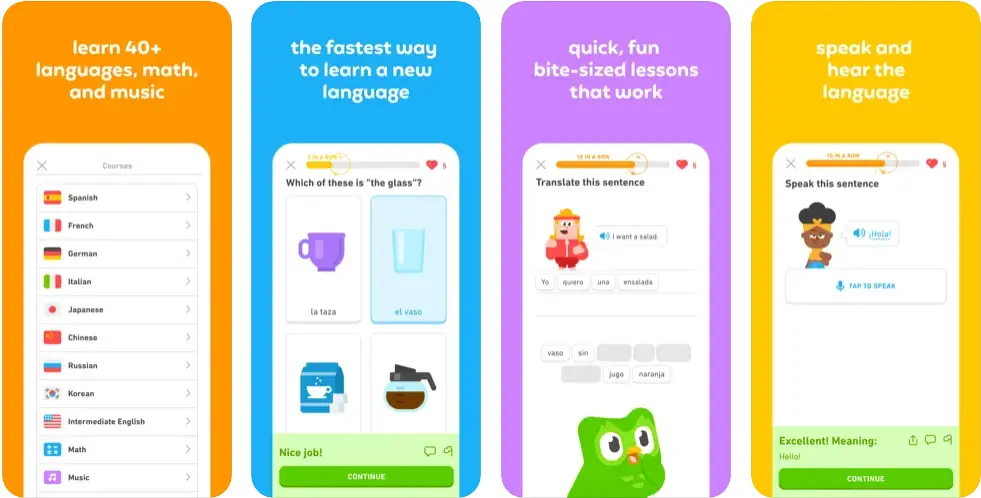
People love how Duolingo turns learning over 40 languages into a game, making it one of the best apps for language learning. Ideal for beginners, it breaks lessons into bite-sized, engaging tasks, making learning feel more like a game than a job. With daily streaks, prizes, and prompts, it keeps users inspired and consistent. It’s a go-to for anyone looking to learn on the go. Creating an app like Duolingo may gain the attention of a larger audience due to its simplicity and effectiveness.
|
Pros |
Cons |
|
|
2. Babbel
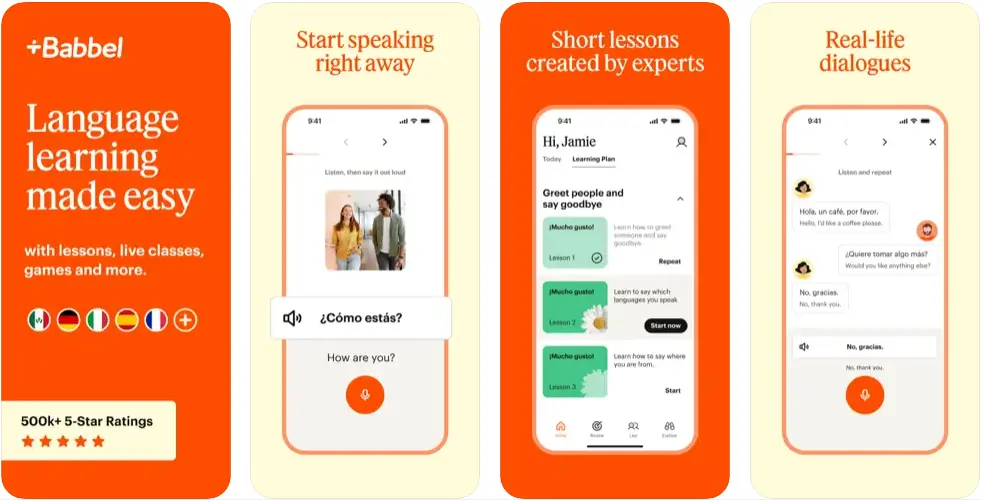
Babbel is another contender among the top language learning apps, praised for its structured, real-world focus. Its lessons are designed to teach practical phrases and vocabulary that users can immediately apply. Unlike other language learning apps, Babbel targets fluency through interactive exercises and conversational practice.
|
Pros |
Cons |
|
|
3. Mondly

Mondly is a top-rated language learning app that mixes fun and functionality. With over 40 languages, it uses live lessons, augmented reality (AR), and chatbot technology to teach phrases and talks successfully. Known as one of the best apps for learning a new language, Mondly caters to newbies and intermediate learners with daily lessons, tests, and progress tracking. All these features directly influence th cost to develop an education app.
|
Pros |
Cons |
|
|
4. Drops
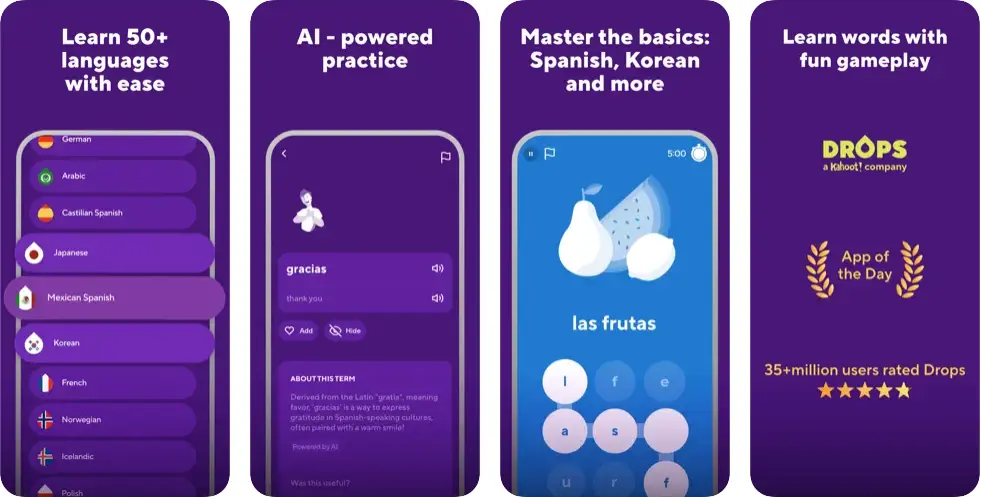
Drops is a visual joy among the best apps to learn languages, focusing on vocabulary through interesting drawings and swipe-based interactions. It’s great for those short on time, as lessons are capped at five minutes. Drops covers over 40 languages, making it a great pick in the top apps for learning languages.
|
Pros |
Cons |
|
|
5. Memrise
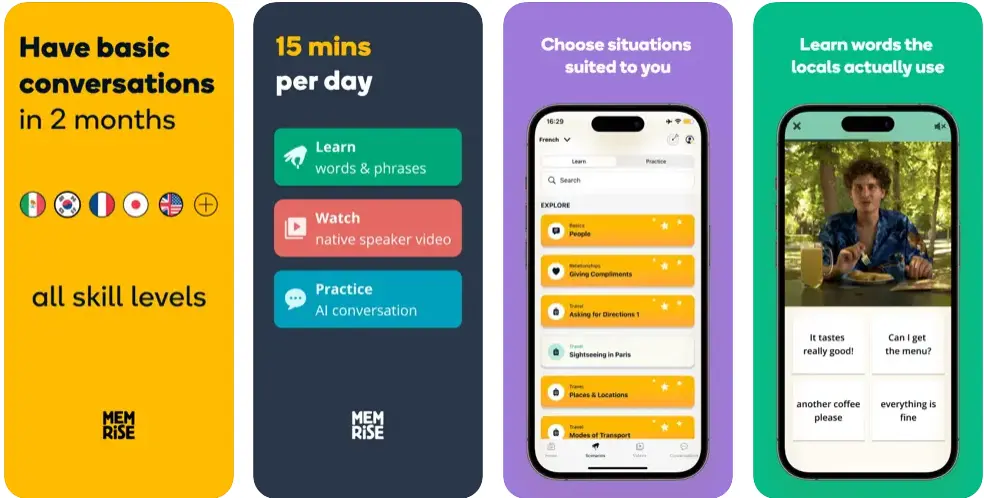
Memrise is next in our list of top-rated language learning apps that makes studying fun by gamifying the learning process. It focuses on real-life phrases and local accents, giving you an authentic language experience. As the best language learning app, Memrise offers courses in 20+ languages, created by both language experts and users, which adds a unique touch to its offerings.
|
Pros |
Cons |
|
|
6. Busuu
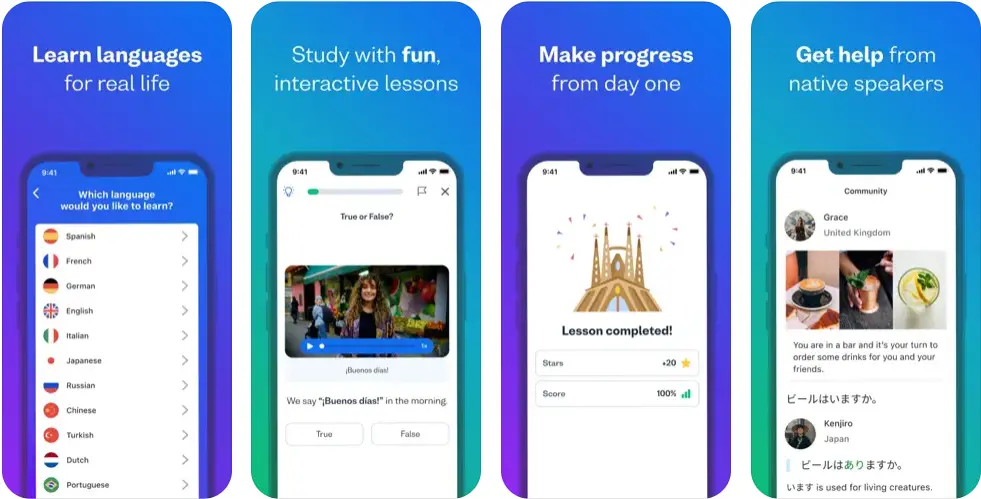
Busuu is a standout in the world of language learning apps, giving a unique learning experience for 12+ languages. It’s one of the best apps for learning languages thanks to its special feature of allowing users to get feedback from native speakers. The app also includes organized lessons covering vocabulary, grammar, and speaking skills, making it ideal for all proficiency levels.
|
Pros |
Cons |
|
|
7. Rosetta Stone
.webp)
Rosetta Stone is a pioneer among the top language learning apps, known for its engaging, full-language method. It focuses on teaching through context rather than translation, ranking among the best apps for learning new languages for serious learners. With support for 20+ languages, Rosetta Stone emphasizes having a strong foundation for long-term fluency while creating an educational app.
|
Pros |
Cons |
|
|
8. HelloTalk
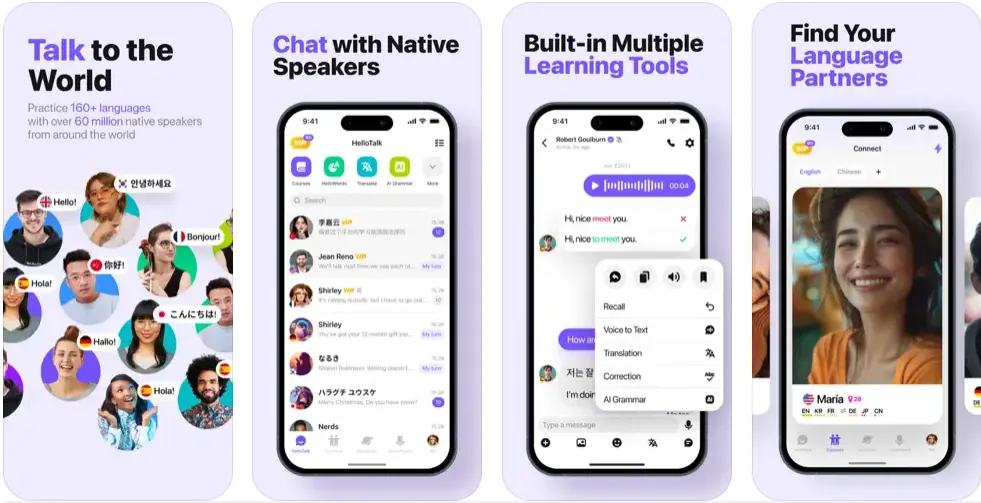
HelloTalk stands out among the top-rated language learning apps for its unique method of connecting users with native speakers from around the world. It works like a social platform, allowing text, voice, and video exchanges to practice real-world contact. This makes it one of the best apps for learning a new language through immersion and conversation with real users.
|
Pros |
Cons |
|
|
9. Pimsleur
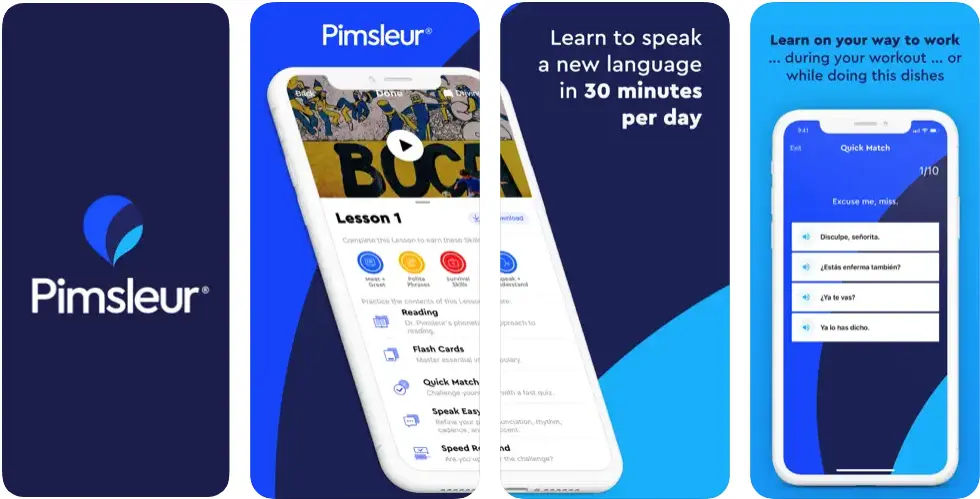
Pimsleur is a classic in the world of language learning apps, offering audio-based lessons that stress speech and listening skills. Its conversational method makes it one of the best apps for learning new languages, especially for those who prefer oral learning. The app covers 50+ languages and is great for learning on the go.
|
Pros |
Cons |
|
|
10. Tandem
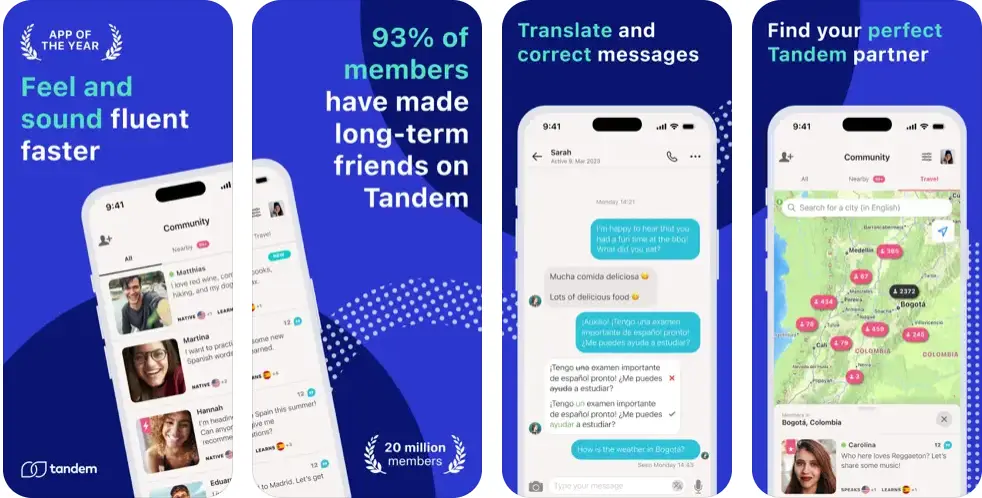
Tandem is a dynamic application connecting language teachers with native speakers abroad. As one of the top foreign language learning apps, it serves over 160 languages and fosters cultural exchange. Its chat-based system, paired with voaaice and video calls, earns its position among the best language learning apps for social practice.
|
Pros |
Cons |
|
|
11. LingQ
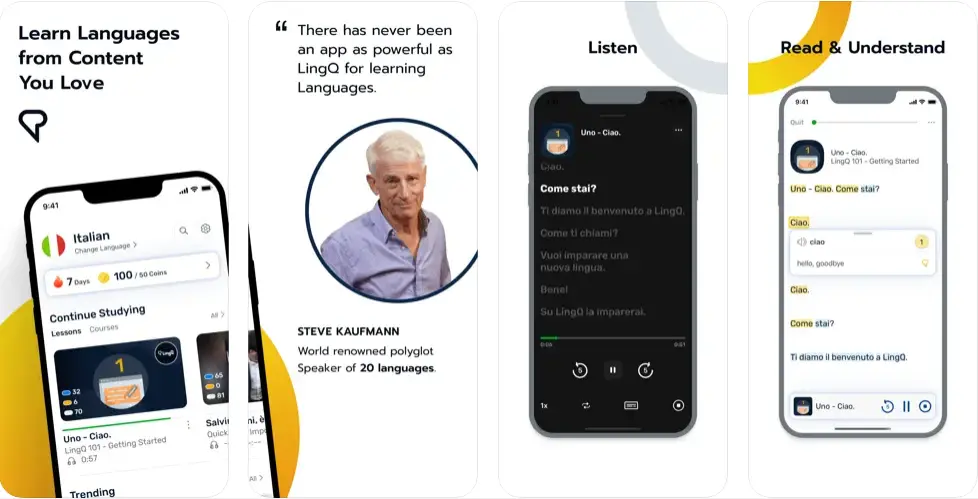
LingQ is a powerhouse among the best language learning apps for those who enjoy diving into real material like articles, podcasts, and books in their target language. This app focuses on immersive learning, allowing users to build vocabulary while dealing with real-world information. With 25+ languages offered, it’s one of the top-rated language learning apps for self-paced learners.
|
Pros |
Cons |
|
|
12. Beelinguapp
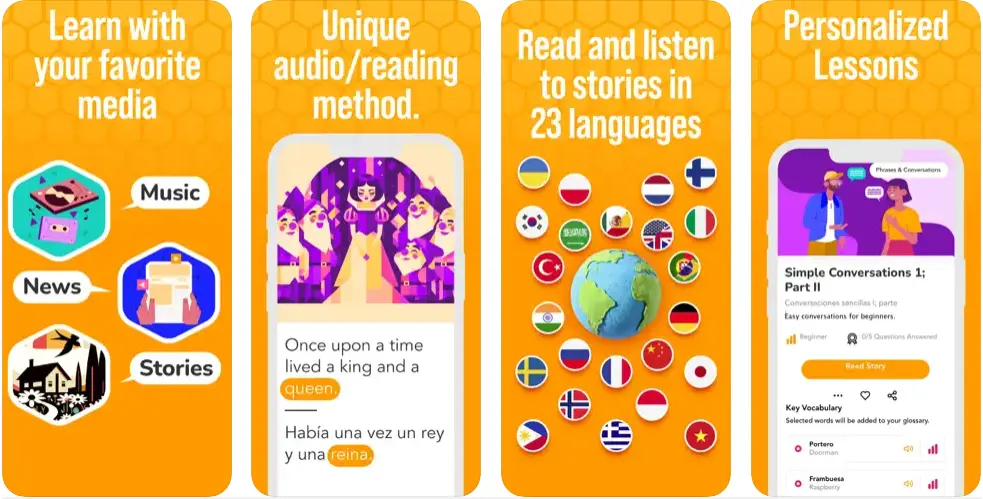
Beelinguapp is a favorite among the top free language learning apps, mixing stories with language learning. It offers side-by-side texts in your native and target languages, helping you improve comprehension while reading short stories, news pieces, or books. Its unique style makes it one of the best language learning apps in a fun and relaxed way.
|
Pros |
Cons |
|
|
13. Lingvist
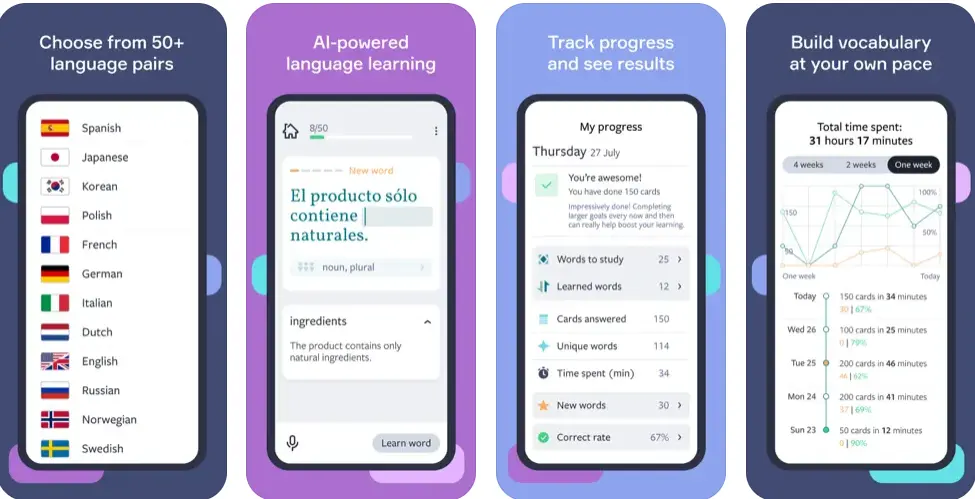
Lingvist is an AI-powered tool that focuses on building vocabulary effectively. As one of the best apps for learning languages, it uses flexible learning to create lessons based on your skill level and progress. With a clean design and short lessons, Lingvist is perfect for busy learners looking to improve fast.
|
Pros |
Cons |
|
|
14. FluentU
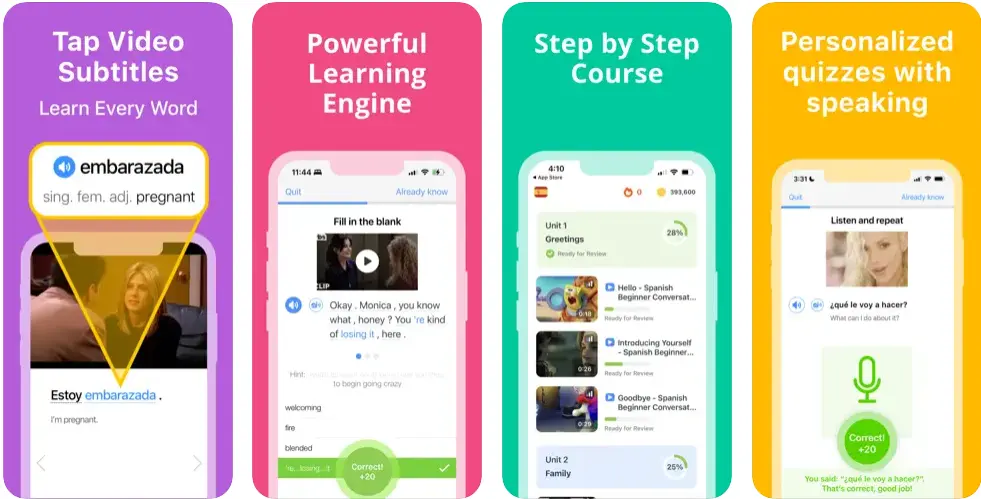
FluentU is a star among the top-rated language learning apps for its innovative use of real-world videos like movie clips, music videos, and news to teach languages. These education app features turn these movies into engaging lessons, helping you improve listening, understanding, and vocabulary in a fun way. If you’re looking for the best apps for learning a new language, FluentU offers a lively and full experience.
|
Pros |
Cons |
|
|
15. LinguaLift
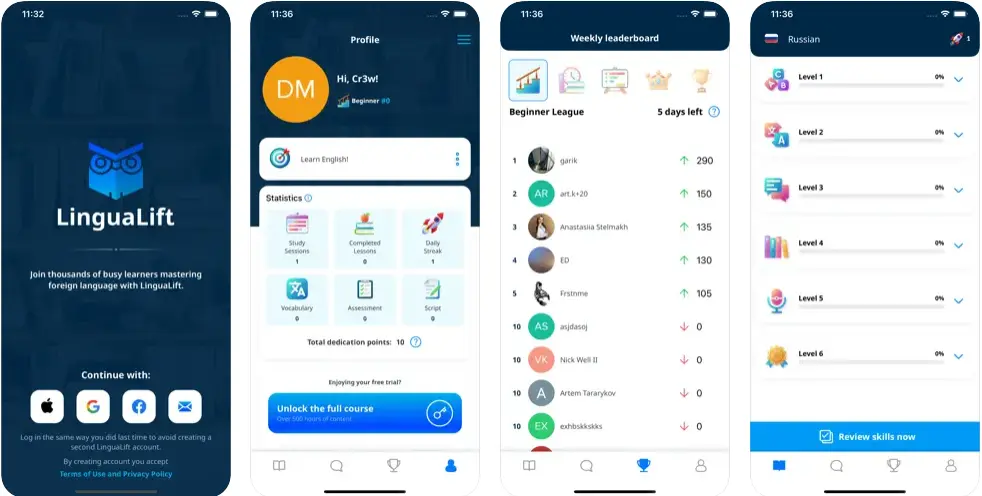
LinguaLift is a personalized tool among the best language learning apps, especially for serious learners who want structured help. It blends self-study tools with tutor help, making it one of the top paid language learning apps for those wanting a customized experience. It’s ideal for pupils who value specific cultural and grammatical observations.
|
Pros |
Cons |
|
|
16. MosaLingua
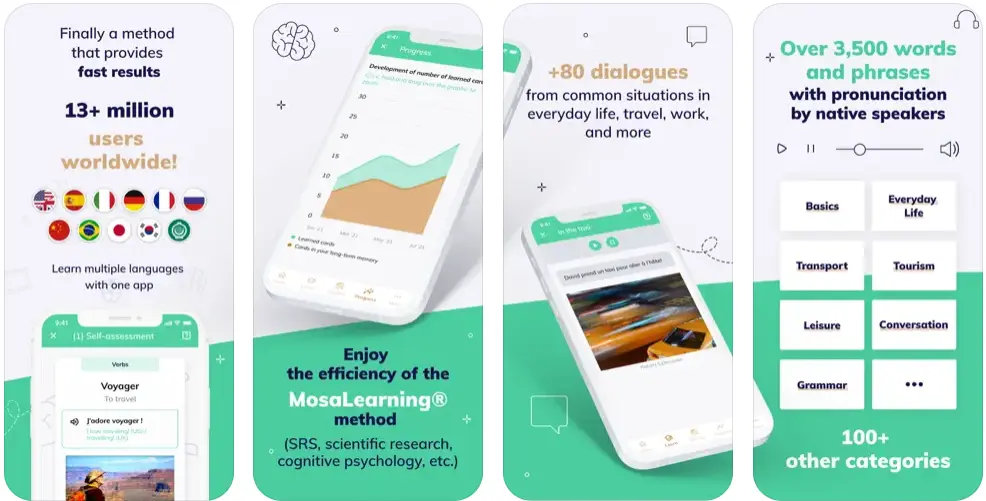
MosaLingua is a flashcard-based tool, great for building vocabulary quickly and efficiently. It ranks among the top language learning apps for its focus on high-frequency words and phrases, making it great for tourists or those looking for useful language skills. With different languages available, it is placed among the best apps for learning languages on the go.
|
Pros |
Cons |
|
|
17. Lingodeer
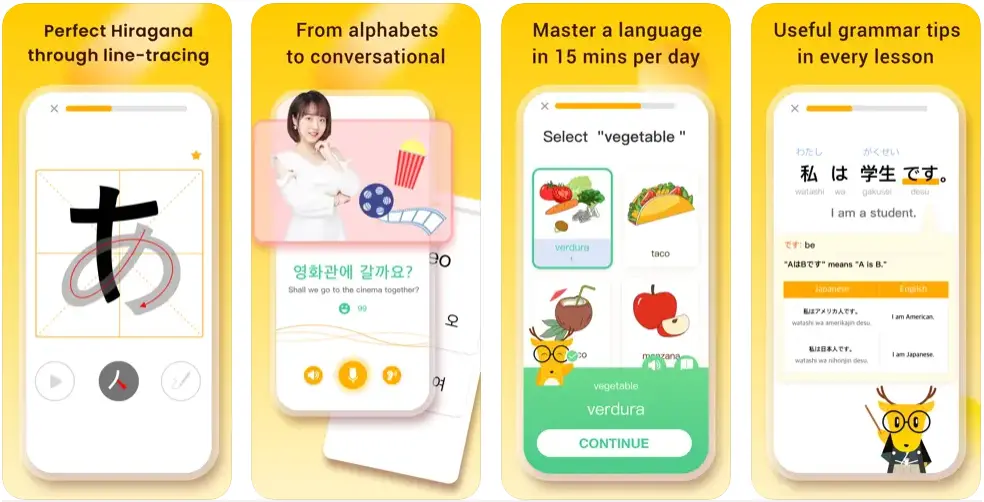
Lingodeer is a language learning app that offers an interesting and organized method for understanding new languages. With its interactive lessons and thorough program, it’s an ideal choice for beginners to experienced learners looking for a well-rounded language learning experience. Lingodeer is great for learners who want a structured, step-by-step method to language learning with a focus on grammar and vocabulary.
|
Pros |
Cons |
|
|
18. Mindsnacks
Mindsnacks gamifies language learning, making it a fun and engaging app for kids and adults alike. With colorful visuals and mini-games, it’s one of the best apps for learning new languages while keeping boredom at bay. This app is especially great for beginners or casual learners.
|
Pros |
Cons |
|
|
19. Lirica
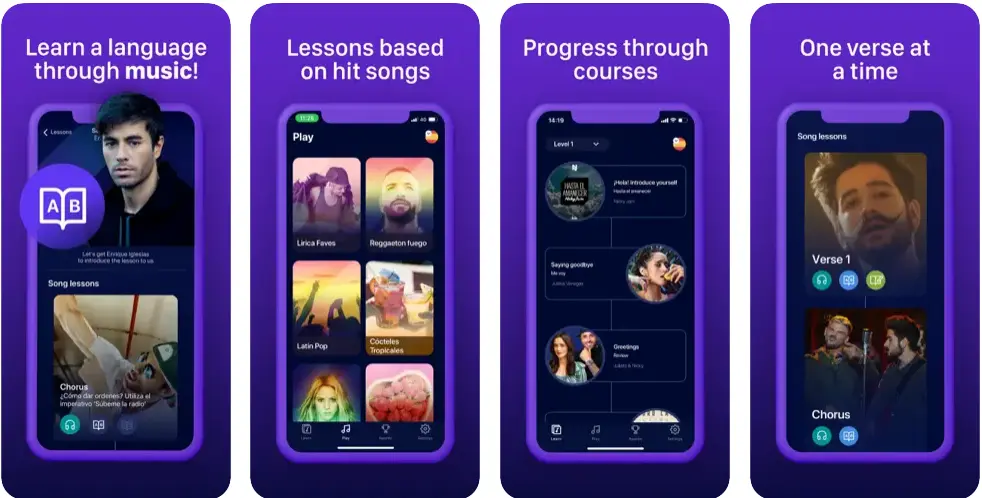
Lirica stands out among top-rated language learning apps by teaching languages through music. It uses lyrics from popular songs to improve vocabulary and listening skills, making it one of the best apps for learning languages with a creative twist. Ideal for music lovers, this app brings fun into language practice.
|
Pros |
Cons |
|
|
20. HiNative
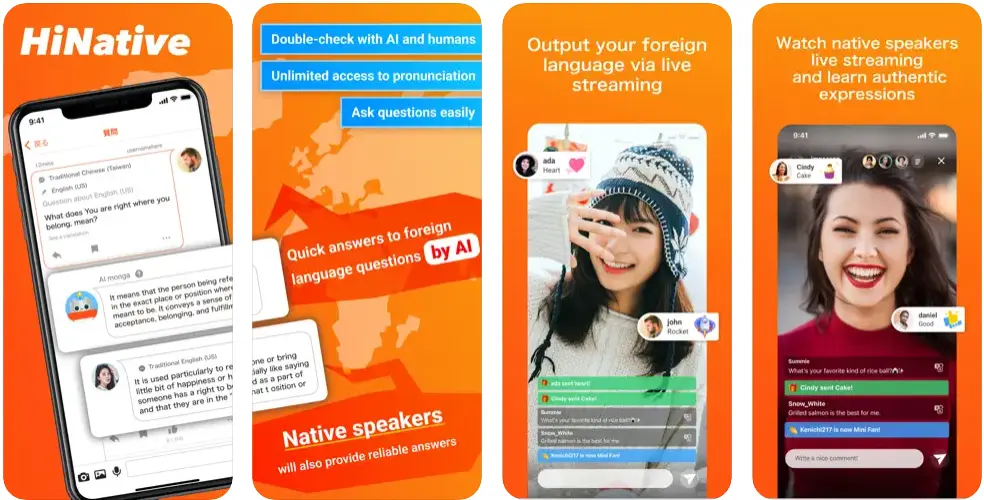
HiNative is a community-driven app, great for learners wanting real-time help and cultural insights. It links you with native speakers who answer your questions, securing its name among the top apps to learn languages with human contact. This app is a must-have for handling tricky sentences or pronunciation problems.
|
Pros |
Cons |
|
|
How JPLoft Can Help You Build a Robust Language Learning App?
As a leading education app development company, we specialize in turning new ideas into powerful, user-friendly apps. If you're driven to build the next big thing in the world of language learning apps, we're here to help you every step of the way. Our team of experts uses cutting-edge technology and user-centric design to build apps that engage, teach, and improve the user experience.
Whether you want to combine gamification like Duolingo, engaging videos like FluentU, or real-world contacts like Tandem, we ensure your app stands out in the competitive market. From intuitive UI/UX design to advanced features such as AI-based recommendations and real-time progress tracking, we build apps that connect with your audience.
Let JPLoft turn your idea into a robust, scalable, and feature-rich language learning tool that users love.
Final Words
Language learning has never been more approachable, thanks to the best language learning apps available today. Whether you're diving into new countries, advancing your job, or just embracing a lasting interest, apps like Duolingo, Babbel, and Rosetta Stone make the process engaging and effective. Each app comes with its unique features, responding to different learning styles and goals.
The demand for new and interactive language learning apps continues to grow, showing the immense potential of this market. If you're looking to build your own app, ensure it’s user-focused, filled with unique features, and adaptable to current learning needs. The path of making a top-rated language learning app is difficult but highly satisfying when you see users understanding languages and connecting with the world.
FAQs
The best apps for beginners include Duolingo, Babbel, and Mondly, as they offer user-friendly interfaces, engaging exercises, and structured lessons to build foundational skills.
Duolingo, HelloTalk, and Tandem offer free versions with essential features. However, they also have premium plans for advanced features and ad-free experiences.
Language learning apps provide flexibility, gamified learning, and on-the-go access. While they lack real-time classroom interaction, they can be a great supplement to traditional learning.
Look for apps with diverse content like vocabulary, grammar, pronunciation exercises, real-time practice, and personalized progress tracking for a comprehensive learning experience.
Apps can help you achieve conversational proficiency by building vocabulary and grammar. However, combining them with speaking practice, immersion, and cultural experiences enhances fluency.








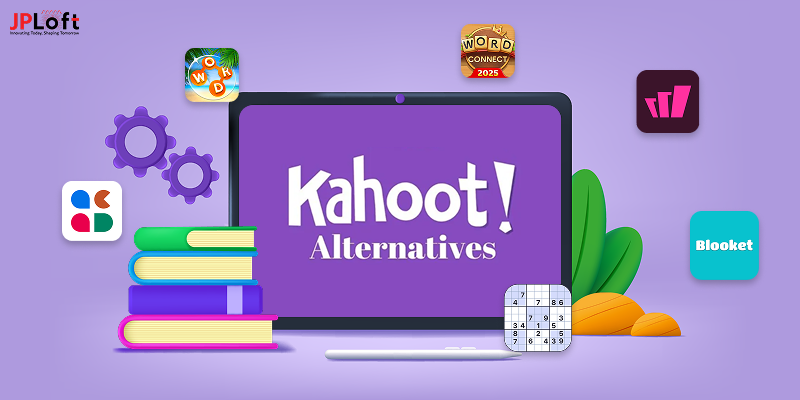
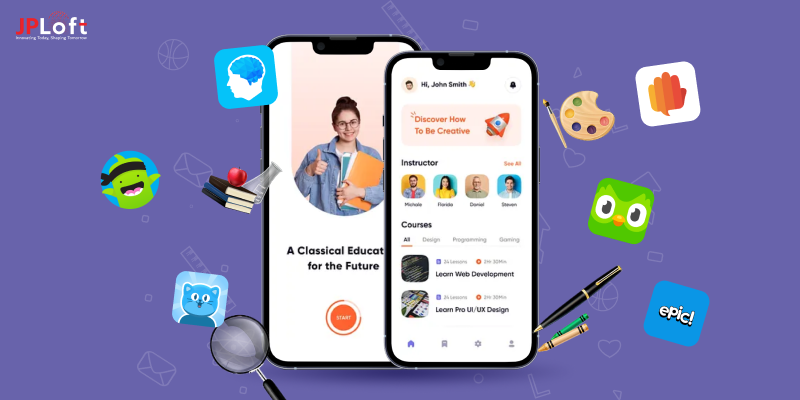


Share this blog